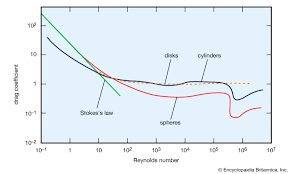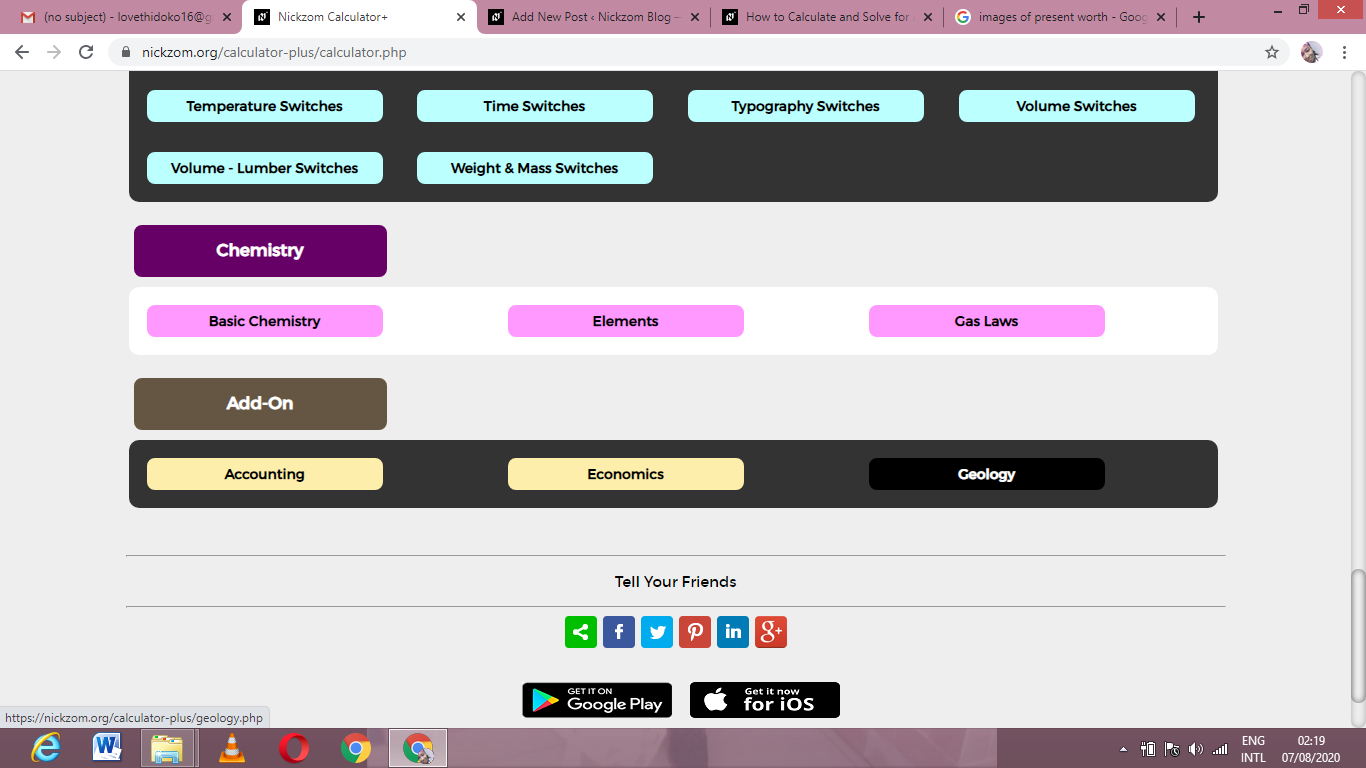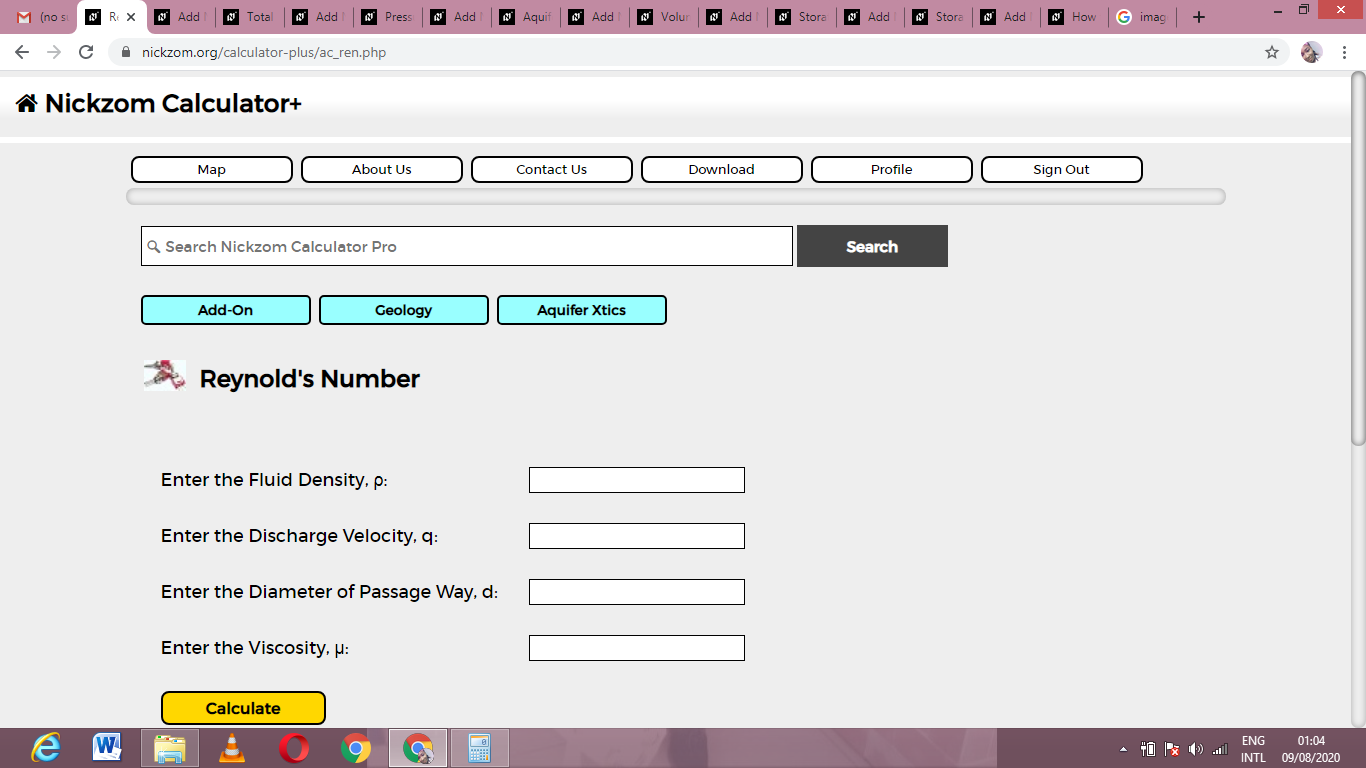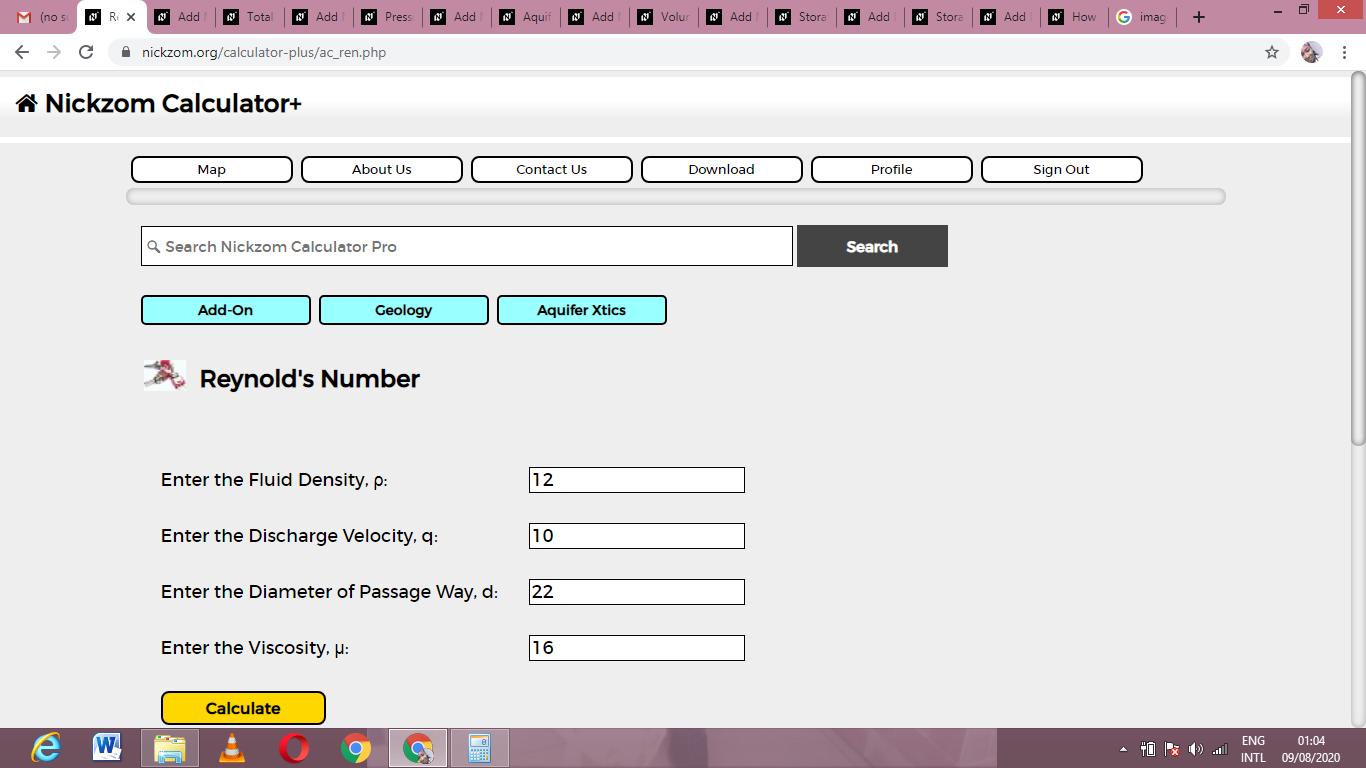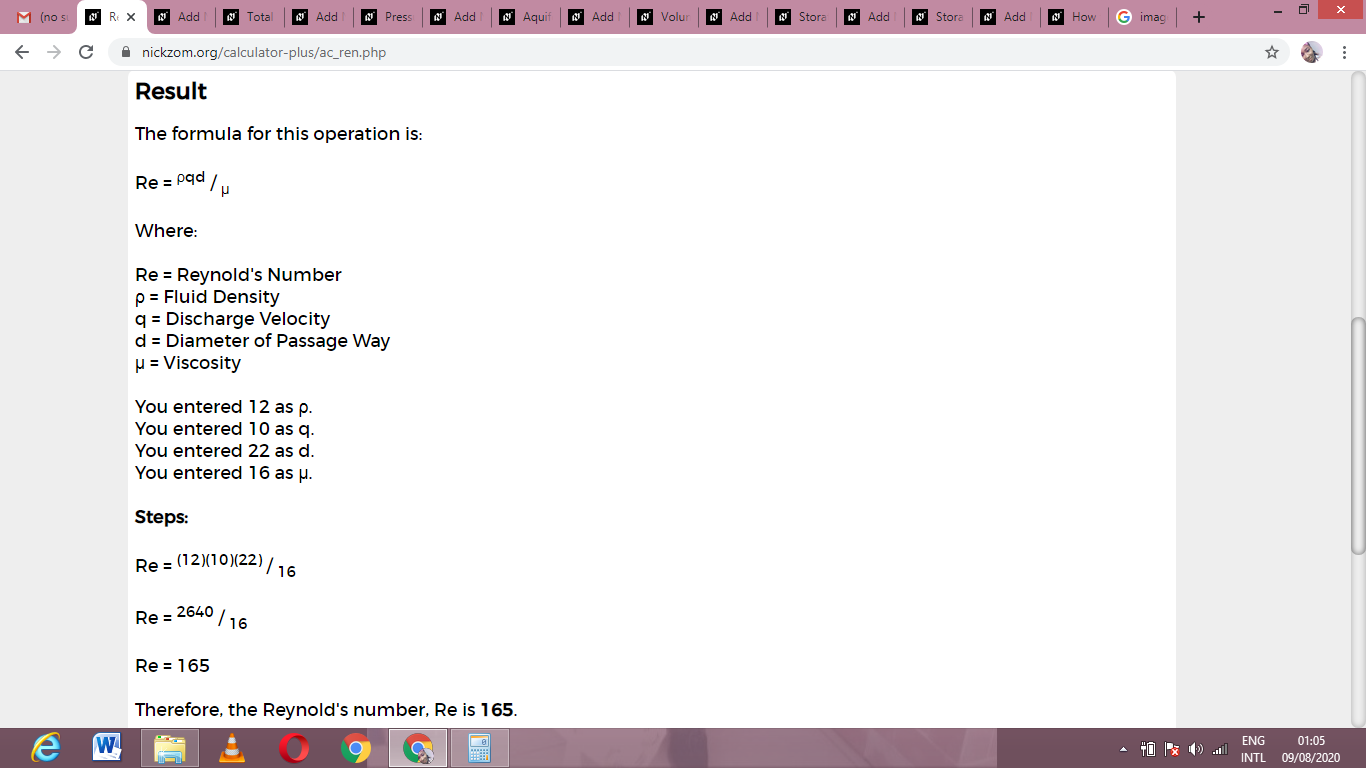The image above represents Reynold’s number. To calculate Reynolds number, four essential parameters are needed, and these parameters are Fluid density (ρ), Discharge velocity (q), Diameter of passage way (d) and Viscosity (μ).
The formula for calculating Reynolds number:
Re = ρqd / μ
Where:
Re = Reynold’s Number
ρ = Fluid Density
q = Discharge Velocity
d = Diameter of Passage Way
μ = Viscosity
Let’s solve an example;
Find the Reynolds number when the fluid density is 12, discharge velocity is 10, diameter of passsage way is 22 and the viscosity is 16.
This implies that;
ρ = Fluid Density = 12
q = Discharge Velocity = 10
d = Diameter of Passage Way = 22
μ = Viscosity = 16
Re = ρqd / μ
That is, Re = (12)(10)(22) / 16
Re = 2640 / 16
Re = 165
Therefore, the Reynolds number is 165.
Calculating the Fluid Density when Reynolds Number, the Discharge Velocity, the Diameter of Passage Way and the Viscosity are Given
ρ = Re x μ / qd
Where;
ρ = Fluid Density
Re = Reynolds Number
q = Discharge Velocity
d = Diameter of Passage Way
μ = Viscosity
Let’s solve an example;
Find the fluid density when the Reynolds number is 20, the discharge velocity is 8, the diameter of passage way is 4 and the viscosity is 3.
This implies that;
Re = Reynolds Number = 20
q = Discharge Velocity = 8
d = Diameter of Passage Way = 4
μ = Viscosity = 3
ρ = Re x μ / qd
Then, ρ = 20 x 3 / (8)(4)
ρ = 60 / 32
ρ = 1.875
Therefore, the fluid density is 1.875.
Read more: How to Calculate and Solve for Average Linear Velocity | Aquifer Characteristics
Calculating the Discharge Velocity when Reynolds Number, the Fluid Density, the Diameter of Passage Way and the Viscosity are Given
q = Re x μ / ρd
Where;
q = Discharge Velocity
Re = Reynolds Number
ρ = Fluid Density
d = Diameter of Passage Way
μ = Viscosity
Let’s solve an example;
Find the discharge velocity when the Reynolds number is 35, the fluid density is 9, the diameter of passage way is 4 and the viscosity is 5.
This implies that;
Re = Reynolds Number = 35
ρ = Fluid Density = 9
d = Diameter of Passage Way = 4
μ = Viscosity = 5
q = Re x μ / ρd
So, q = 35 x 5 / (9)(4)
q = 175 / 36
q = 4.861
Therefore, the discharge velocity is 4.861.
Calculating the Diameter of Passage Way when the Reynolds Number, the Fluid Density, the Discharge Velocity and the Viscosity are Given.
d = Re x μ / ρq
Where;
d = Diameter of Passage Way
Re = Reynolds Number
ρ = Fluid Density
q = Discharge Velocity
μ = Viscosity
Master Calculations Instantly
Unlock solutions for math, physics, engineering, and chemistry problem with step-by-step clarity. No internet required. Just knowledge at your fingertips, anytime, anywhere.
Let’s solve an example;
Given that the Reynolds number is 40, the fluid density is 6, the discharge velocity is 10 and the viscosity is 9. Find the Diameter of passage way.
This implies that;
Re = Reynolds Number = 40
ρ = Fluid Density = 6
q = Discharge Velocity = 10
μ = Viscosity = 9
d = Re x μ / ρq
That is, d = 40 x 9 / (6)(10)
d = 360 / 60
d = 6
Therefore, the diameter of passage way is 6.
Calculating the Viscosity when the Reynolds Number, the Fluid Density, the Discharge Velocity and the Diameter of Passage Way are Given
μ = ρqd / Re
Where;
μ = Viscosity
Re = Reynolds Number
ρ = Fluid Density
q = Discharge Velocity
d = Diameter of Passage Way
Let’s solve an example;
Find the viscosity when the reynold’s number is 33, the fluid density is 7, the discharge velocity is 3 and the diameter of passage way is 9.
This implies that;
Re = Reynold’s Number = 33
ρ = Fluid Density = 7
q = Discharge Velocity = 3
d = Diameter of Passage Way = 9
μ = ρqd / Re
Hence, μ = (7)(3)(9) / 33
μ = 189 / 33
μ = 5.72
Therefore, the viscosity is 5.72.
How to Calculate and Solve for Reynold’s Number Using Nickzom Calculator
Nickzom Calculator – The Calculator Encyclopedia is capable of calculating the reynold’s number.
To get the answer and workings of the reynold’s number using the
Nickzom Calculator – The Calculator Encyclopedia. First, you need to obtain the app.
You can get this app via any of these means:
Web – https://www.nickzom.org/calculator-plus
To get access to the professional version via web, you need to register and subscribe for NGN 2,000 per annum to have utter access to all functionalities.
You can also try the demo version via https://www.nickzom.org/calculator
Android (Paid) – https://play.google.com/store/apps/details?id=org.nickzom.nickzomcalculator
Android (Free) – https://play.google.com/store/apps/details?id=com.nickzom.nickzomcalculator
Apple (Paid) – https://itunes.apple.com/us/app/nickzom-calculator/id1331162702?mt=8
Once, you have obtained the calculator encyclopedia app, proceed to the Calculator Map, then click on Geology under Add-on.
So, Click on Aquifer Characteristics under Geology
Now, Click on Reynold’s Number under Aquifer Characteristics
The screenshot below displays the page or activity to enter your values, to get the answer for the reynold’s number according to the respective parameters which are the Fluid density (ρ), Discharge velocity (q), Diameter of passage way (d) and Viscosity (μ).
Now, enter the values appropriately and accordingly for the parameters as required by the Fluid density (ρ) is 12, Discharge velocity (q) is 10, Diameter of passage way (d) is 22 and Viscosity (μ) is 16.
Finally, Click on Calculate
Master Calculations Instantly
Unlock solutions for math, physics, engineering, and chemistry problem with step-by-step clarity. No internet required. Just knowledge at your fingertips, anytime, anywhere.
As you can see from the screenshot above, Nickzom Calculator– The Calculator Encyclopedia solves for the reynold’s number and presents the formula, workings and steps too.
